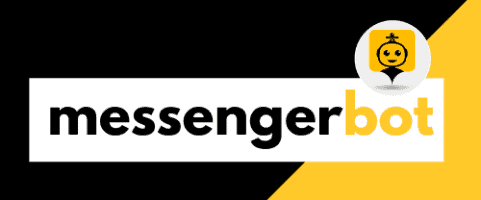Key Takeaways
- Push notifications are essential for enhancing user engagement, driving traffic, and promoting timely updates.
- Effective push notifications can increase user retention by 88%, making them a vital tool for businesses.
- Personalization and targeted messaging significantly improve the effectiveness of push notifications.
- Timing and frequency matter: Optimal engagement occurs with 1-2 notifications per week to avoid user fatigue.
- Web push notifications allow businesses to engage users directly through browsers, even without an app.
- Utilizing platforms like Firebase simplifies the process of sending push notifications from websites and apps.
In today’s fast-paced digital landscape, mastering the art of send push notifications is crucial for businesses aiming to engage users effectively. Push notifications serve as a powerful tool for enhancing user experience and driving engagement, but understanding their nuances can be challenging. This article will delve into the definition and importance of push notifications, explore the key differences between notifications and push notifications, and provide real-world examples of effective strategies. We will also discuss the pros and cons of enabling push notifications, clarify the distinctions between push notifications and text messages, and guide you through the technical aspects of sending push notifications from websites and apps. Whether you’re looking to send push notifications from a website, to iPhone, or even using JavaScript, this comprehensive guide will equip you with the insights needed to leverage push notifications for maximum impact.
Understanding Push Notifications: Definition and Importance
A push notification is a brief message that appears as a pop-up on your desktop browser, mobile home screen, or within your device’s notification center, originating from a mobile application. These notifications are typically opt-in alerts, meaning users must consent to receive them. They can display text, images, and interactive elements such as buttons, prompting users to take specific actions.
Push notifications serve various purposes, including:
- User Engagement: They help maintain user interest by delivering timely updates, reminders, or promotional content directly to users.
- Real-Time Communication: Businesses utilize push notifications to communicate important information instantly, such as breaking news, weather alerts, or event reminders.
- Personalization: By leveraging user data, push notifications can be tailored to individual preferences, enhancing the relevance of the messages received.
Recent studies indicate that effective push notifications can significantly increase user retention and engagement rates. According to a report by Localytics, users who opt-in to push notifications are 88% more likely to return to an app compared to those who do not receive them (Localytics, 2021).
For optimal results, businesses should consider the following best practices when implementing push notifications:
- Timing: Send notifications at times when users are most likely to engage, based on their activity patterns.
- Content Quality: Ensure the message is concise, clear, and provides value to the user.
- Frequency: Avoid overwhelming users with too many notifications, which can lead to opt-outs.
Incorporating push notifications into a broader communication strategy, such as through Messenger Bots, can further enhance user interaction by providing immediate responses and facilitating conversations, thereby enriching the overall user experience.
The Role of Push Notifications in User Engagement
Push notifications play a crucial role in user engagement by fostering direct communication between businesses and their audience. By sending timely and relevant messages, businesses can keep users informed and encourage them to interact with their applications or websites. This direct line of communication not only enhances user experience but also builds brand loyalty.
Moreover, push notifications can be strategically used to:
- Drive Traffic: Notifications can direct users back to the app or website, increasing traffic and potential conversions.
- Promote Offers: Businesses can highlight special promotions or discounts, enticing users to take action.
- Gather Feedback: Engaging users through notifications can also be a way to collect valuable feedback, helping businesses improve their offerings.
Utilizing tools like Messenger Bot can streamline this process, allowing for automated responses and personalized interactions that enhance user engagement.
How Push Notifications Enhance User Experience
Push notifications significantly enhance user experience by providing timely information that is relevant to users’ interests and behaviors. When executed correctly, they can make users feel valued and informed, leading to a more satisfying interaction with the brand.
Key ways push notifications enhance user experience include:
- Instant Updates: Users receive real-time updates about their interests, ensuring they are always in the loop.
- Personalized Content: Tailoring notifications based on user preferences increases the likelihood of engagement and satisfaction.
- Convenience: Users can quickly access information or complete actions directly from the notification, streamlining their experience.
By integrating push notifications into your communication strategy, especially through platforms like Messenger Bot, you can create a seamless experience that keeps users engaged and coming back for more.
Understanding Push Notifications: Definition and Importance
Push notifications are a powerful tool in the digital communication landscape, allowing businesses to send messages directly to users’ devices, even when they are not actively using an app. This capability makes them essential for engaging users and driving traffic back to applications. By leveraging push notifications, brands can enhance user engagement, promote timely updates, and deliver personalized content that resonates with their audience.
Notifications vs. Push Notifications: Key Differences Explained
Understanding the distinction between notifications and push notifications is crucial for maximizing their effectiveness. Here’s a breakdown of the key differences:
- Definition:
- Push Notifications: These are messages sent from a server directly to a user’s device, appearing on the home screen or notification center. They are effective for engaging users and driving traffic back to the app.
- In-App Notifications: Displayed within the app while the user is actively engaged, these messages provide updates or prompts that enhance the user experience without interrupting app usage.
- User Engagement:
- Push Notifications: Designed to capture attention and encourage users to return to the app, they can be personalized based on user behavior, increasing interaction likelihood.
- In-App Notifications: Focus on enhancing the current user experience by providing contextual information relevant to user actions, leading to higher satisfaction and retention.
- Timing and Context:
- Push Notifications: Sent at any time, allowing for timely updates but can lead to user fatigue if overused. Optimal frequency is 1-2 times per week to maintain engagement.
- In-App Notifications: Triggered by specific user actions, ensuring relevance and timeliness, which helps maintain user focus.
- Examples of Use:
- Push Notifications: Commonly used for marketing campaigns, reminders, or alerts about new content, such as e-commerce apps notifying users about flash sales.
- In-App Notifications: Used for onboarding tips or feature announcements, like a messaging app guiding users through new functionalities.
In conclusion, understanding the differences between push notifications and in-app notifications allows businesses to effectively utilize both types to enhance user experience and drive app success. For more insights on user engagement strategies, check out Push Notification services.
When to Use Push Notifications for Maximum Impact
To maximize the impact of push notifications, it’s essential to consider the timing, content, and frequency of your messages. Here are some strategies:
- Targeted Messaging: Use data analytics to segment your audience and send personalized push notifications that cater to their preferences and behaviors. This increases the likelihood of engagement.
- Timely Updates: Send notifications during peak usage times or in response to specific user actions, such as cart abandonment reminders or alerts about new content that aligns with user interests.
- Clear Call-to-Action: Ensure that each push notification includes a clear and compelling call-to-action that encourages users to engage with your app or website. This could be a link to a special offer or new feature.
- Frequency Management: Avoid overwhelming users with too many notifications. Stick to the optimal frequency of 1-2 times per week to maintain engagement without causing annoyance.
By implementing these strategies, businesses can effectively send push notifications that resonate with users and drive meaningful interactions. For further guidance on setting up your push notifications, explore our quick chatbot setup guide and learn how to enhance your communication strategy.
Notifications vs. Push Notifications: Key Differences Explained
Push notifications are messages sent by applications to users’ devices, designed to engage and inform them in real-time. Understanding the distinction between notifications and push notifications is crucial for effective communication strategies.
**Types of Notifications: In-App vs. Push Notifications**
1. **In-App Notifications**: These appear while users are actively using an application. They are typically contextual and provide information relevant to the current activity, such as tips or updates related to the features being used. For example, a gaming app might show an in-app notification about a new level or feature while the user is playing.
2. **Push Notifications**: Unlike in-app notifications, push notifications can reach users even when they are not actively using the app. They are designed to draw users back into the app or keep them informed about important updates. Common examples include app updates, breaking news alerts, and promotional offers. These notifications can significantly enhance user engagement when used effectively.
Understanding these differences helps businesses decide when to send push notifications for maximum impact, ensuring they reach users at the right time and place.
When to Use Push Notifications for Maximum Impact
To maximize the effectiveness of push notifications, consider the following strategies:
1. **Timing is Key**: Send push notifications at times when users are most likely to engage. For instance, sending promotional offers during peak shopping hours can lead to higher conversion rates.
2. **Personalization**: Tailor notifications based on user behavior and preferences. Personalized push notifications can increase engagement rates significantly, as they resonate more with the recipient’s interests.
3. **Clear Call to Action**: Ensure that each push notification has a clear purpose and call to action. Whether it’s encouraging users to check out a new feature or reminding them of an upcoming event, clarity drives engagement.
4. **Frequency Management**: Avoid overwhelming users with too many notifications. A well-timed, relevant push notification is more effective than frequent, irrelevant messages.
By strategically using push notifications, businesses can enhance user engagement and drive app usage, ultimately leading to improved customer satisfaction and retention. For more insights on how to send push notifications effectively, explore our [Messenger bot tutorials](https://messengerbot.app/messenger-bot-tutorials/).
Understanding Push Notifications: Definition and Importance
Push notifications are brief messages sent to users’ devices, designed to engage them with timely information, updates, or reminders. They play a crucial role in mobile marketing and user engagement strategies. Here’s a comprehensive look at whether push notifications should be enabled or disabled:
The Role of Push Notifications in User Engagement
1. **Benefits of Push Notifications**:
– **Increased Engagement**: Push notifications can significantly boost user engagement. According to a study by Localytics, users who opt-in for push notifications are 88% more likely to return to an app within 30 days compared to those who do not.
– **User Retention**: Regular updates through push notifications can keep users informed and interested, leading to higher retention rates. A report from Airship indicates that personalized push notifications can increase retention by up to 50%.
– **Enhanced User Experience**: By providing relevant and timely information, push notifications can improve the overall user experience. They can remind users of important events, updates, or offers, making the app more valuable.
2. **Considerations for Enabling Push Notifications**:
– **User Preferences**: It’s essential to consider user preferences. Some users may find push notifications intrusive, leading to app uninstalls. A survey by Statista found that 60% of users prefer to control their notification settings.
– **Frequency and Relevance**: The effectiveness of push notifications depends on their frequency and relevance. Overloading users with notifications can lead to disengagement. A balanced approach is recommended, focusing on quality over quantity.
– **Targeted Messaging**: Utilizing data analytics to send targeted messages can enhance the effectiveness of push notifications. For instance, segmenting users based on their behavior can lead to more personalized and relevant notifications.
How Push Notifications Enhance User Experience
Enabling push notifications can be beneficial for user engagement and retention if done thoughtfully. It’s crucial to strike a balance between keeping users informed and respecting their preferences. For businesses, leveraging tools like Messenger Bot can complement push notifications by providing interactive and personalized communication, enhancing user experience further.
In summary, whether to keep push notifications on or off depends on the specific context of the app and the preferences of its users. By focusing on user engagement strategies and respecting user preferences, businesses can effectively utilize push notifications to enhance their overall app experience.
How to Send Push Notifications Without an App
Sending push notifications without an app is a powerful way to engage users directly through their web browsers. This method allows businesses to reach audiences without requiring them to download a mobile application. Here’s how you can effectively send push notifications without an app:
Exploring Web Push Notifications: A No-App Solution
Web push notifications are messages that can be sent directly to users’ browsers, allowing for real-time communication. To implement web push notifications, follow these steps:
1. **Choose a Service**: Select a reliable service provider like Firebase or other push notification platforms that support web notifications.
2. **Integrate the Code**: Add a small snippet of JavaScript code to your website to enable push notifications. This code will handle user subscriptions and message delivery.
3. **User Opt-In**: Ensure users opt-in to receive notifications. This is typically done through a prompt that appears when they visit your site.
4. **Craft Your Messages**: Create engaging and relevant messages that encourage users to click through to your website or app.
5. **Send Notifications**: Use the service’s dashboard to send notifications based on user behavior or scheduled campaigns.
By utilizing web push notifications, you can effectively send push notifications without an app, enhancing user engagement and driving traffic to your site.
Benefits of Sending Notifications Directly to Browsers
Sending push notifications directly to browsers offers several advantages:
– **Wider Reach**: You can engage users who may not have your app installed, broadening your audience.
– **Real-Time Communication**: Notifications can be sent instantly, keeping users informed about updates, promotions, or important news.
– **Cost-Effective**: This method eliminates the need for app development and maintenance, making it a budget-friendly option for businesses.
– **Enhanced User Engagement**: Well-timed notifications can significantly increase user interaction and retention rates.
Incorporating web push notifications into your marketing strategy allows you to send push notifications from your website effectively, ensuring you stay connected with your audience. For a deeper dive into setting up push notifications, check out our [quick chatbot setup guide](https://messengerbot.app/how-to-set-up-your-first-ai-chat-bot-in-less-than-10-minutes-with-messenger-bot/).
How to Send Push Notifications from Website
Sending push notifications from a website is a straightforward process that can significantly enhance user engagement. By utilizing web push notifications, businesses can reach users directly on their browsers, even when they are not actively visiting the site. This method allows for timely updates, promotional messages, and personalized content delivery.
Using Firebase to Send Push Notifications
Firebase is a powerful platform that simplifies the process of sending push notifications. To send push notifications using Firebase, follow these steps:
- Create a Firebase Project: Start by setting up a new project in the Official Firebase site.
- Integrate Firebase SDK: Add the Firebase SDK to your website to enable push notification capabilities.
- Request User Permission: Prompt users to allow notifications when they visit your site. This is crucial for compliance and user experience.
- Send Notifications: Use the Firebase console or API to send targeted push notifications to users based on their preferences and behaviors.
By leveraging Firebase, businesses can effectively send push notifications from their website and keep users informed about important updates.
Sending Push Notifications to Mobile Devices from a Website
To send push notifications to mobile devices from a website, you can utilize service workers and the Push API. Here’s a brief overview of the process:
- Set Up Service Workers: Implement service workers in your web application to manage push notifications.
- Subscribe Users: Use the Push API to subscribe users to notifications, ensuring they receive updates on their mobile devices.
- Send Notifications: Trigger notifications from your server to the subscribed users, allowing for real-time communication.
This method enables businesses to send push notifications to mobile devices without requiring a dedicated app, making it a versatile solution for enhancing user engagement.
How to Send Push Notifications from Website
Sending push notifications from a website is a powerful way to engage users directly, even without an app. This method allows businesses to reach their audience instantly with updates, promotions, or reminders. Here’s a step-by-step guide on how to send push notifications from your website.
Using Firebase to Send Push Notifications
Firebase is a popular platform for sending push notifications due to its robust features and ease of integration. To send push notifications using Firebase, follow these steps:
- Create a Firebase Project: Start by setting up a new project in the Official Firebase site.
- Configure Your Web App: Add your web app to the Firebase project and obtain the necessary configuration details.
- Integrate Firebase SDK: Include the Firebase JavaScript SDK in your website’s code to enable push notifications.
- Request User Permission: Prompt users to allow notifications by using the Notifications API.
- Send Notifications: Use Firebase Cloud Messaging (FCM) to send notifications to users who have opted in.
By following these steps, you can effectively send push notifications to mobile devices and web users, enhancing user engagement and retention.
Sending Push Notifications to Mobile Devices from a Website
To send push notifications to mobile devices from your website, you can utilize web push technology. Here’s how:
- Implement Service Workers: Service workers are essential for enabling push notifications on mobile browsers. Register a service worker in your web app.
- Subscribe Users: Use the Push API to subscribe users to push notifications, ensuring they have granted permission.
- Send Notifications: When you want to send a notification, use the Push API to trigger the service worker, which will display the notification on the user’s device.
This method allows you to send push notifications directly to users’ phones, keeping them informed and engaged with your content.







